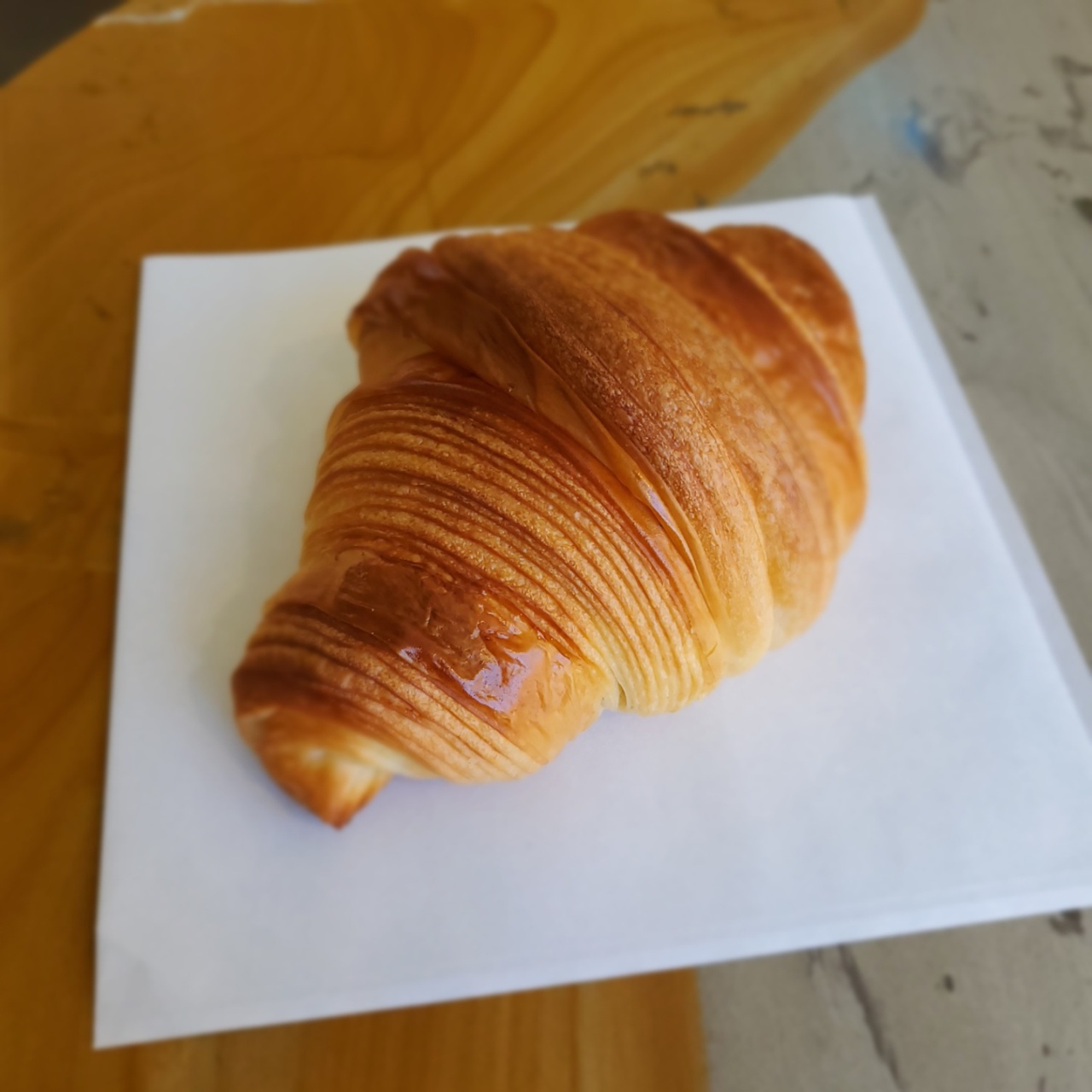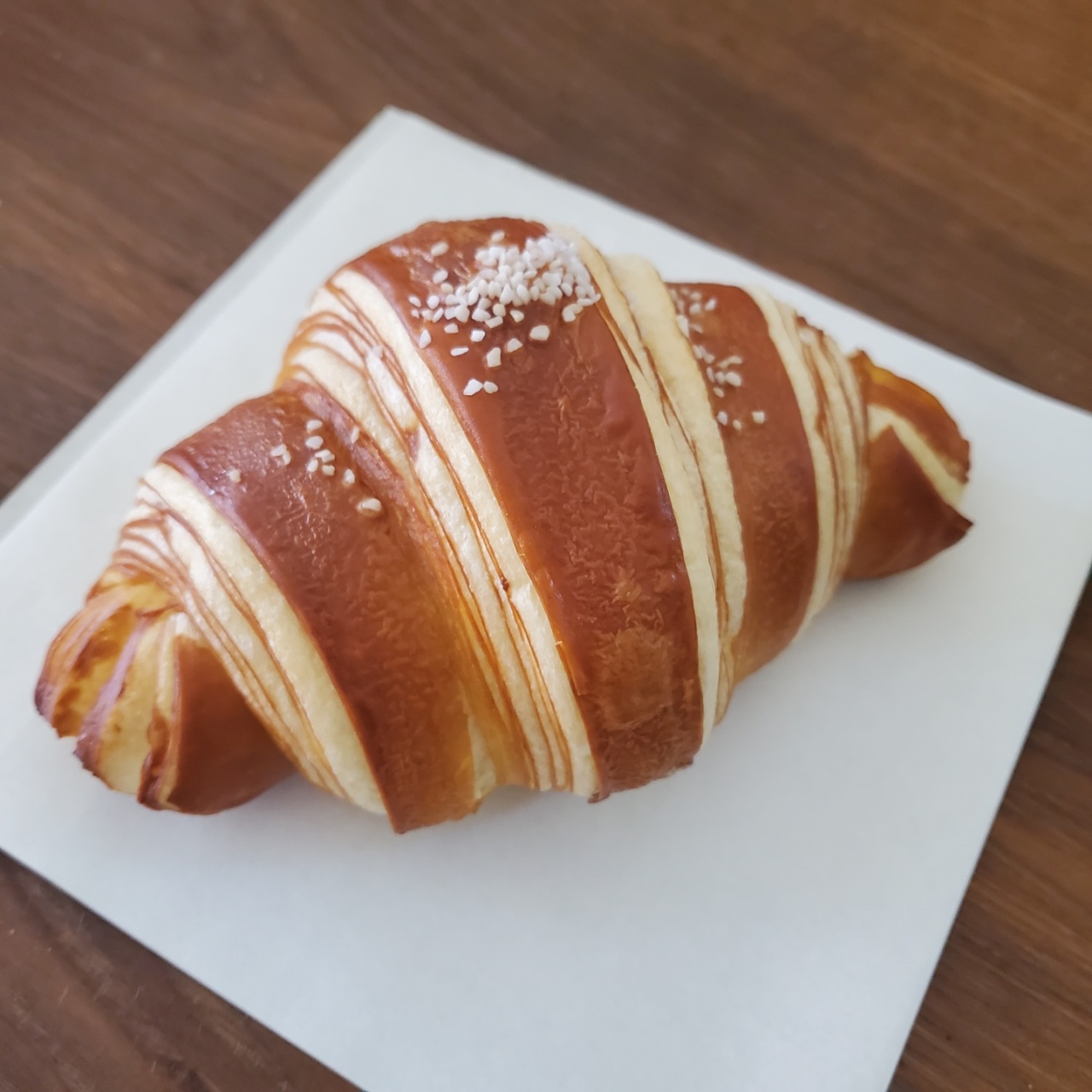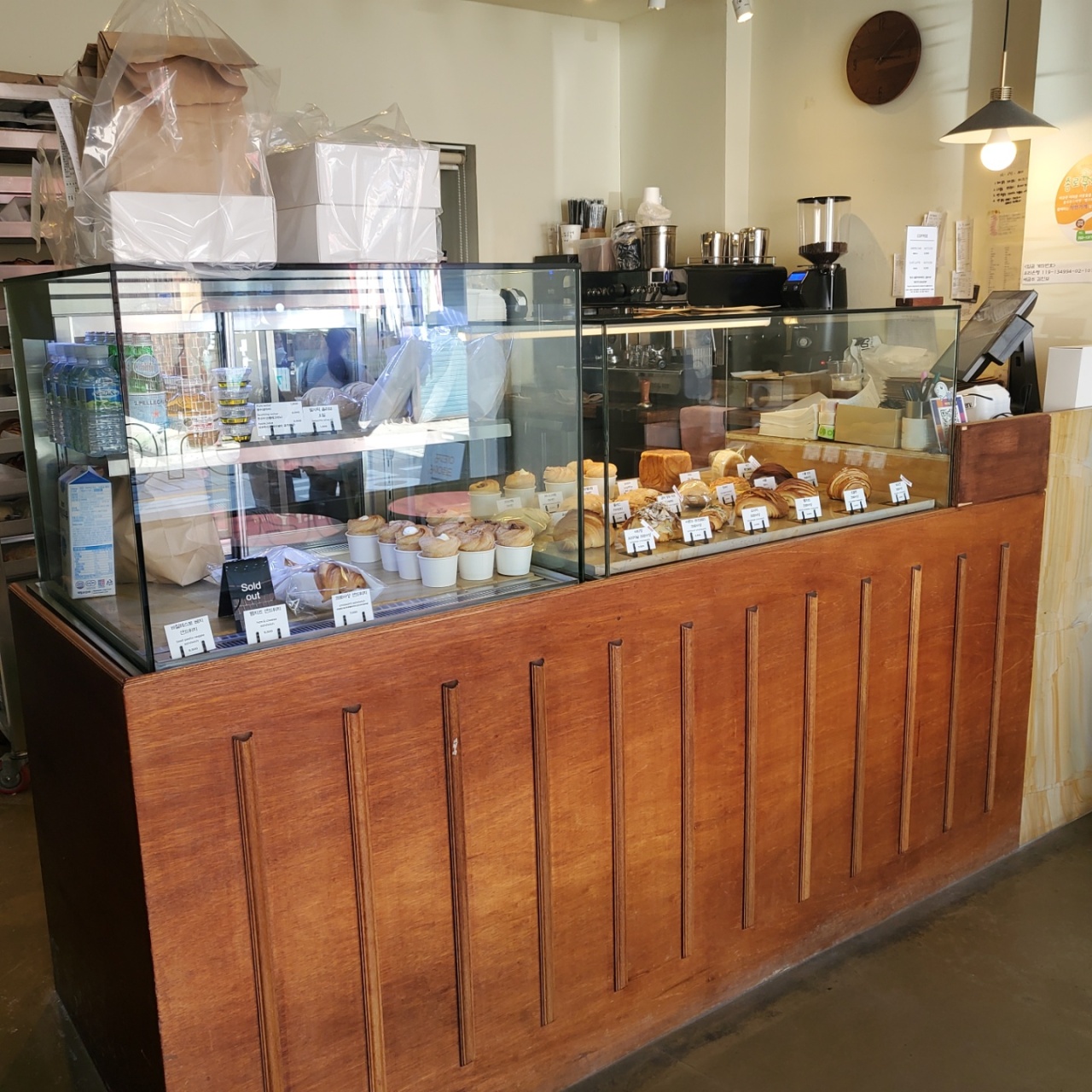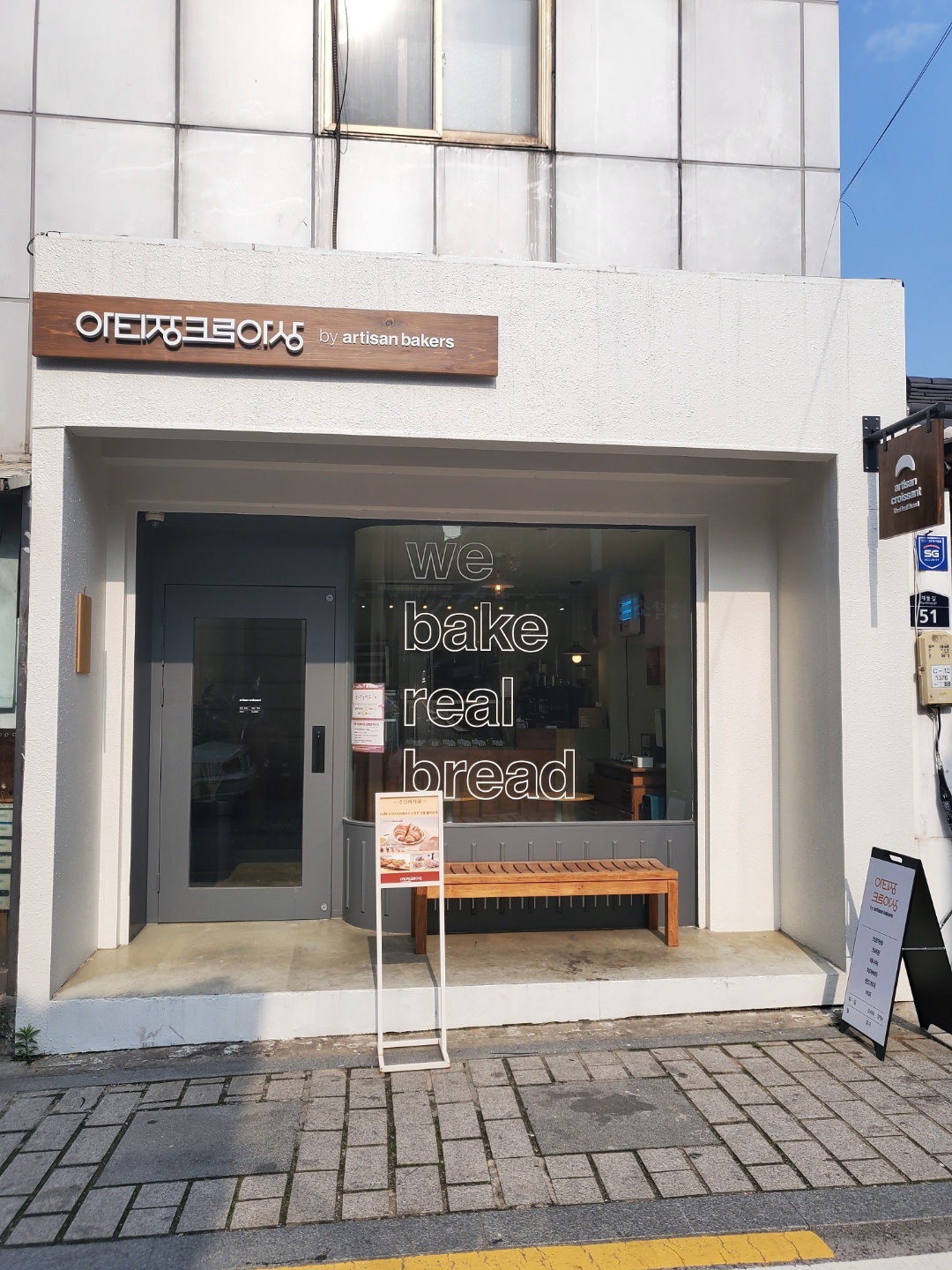
Artisan Croissant Bukchon’s croissants are crafted with carefully curated flours designed to complement the butter used to make them. (Artisan Croissant by Artisan Bakers)
At Artisan Croissant Bukchon, a small bakery located in Seoul’s Gye-dong, one will find various riffs off the popular buttery pastry, including the shop’s scrumptious laugencroissants and classic plain croissants.
The bakery, which opened in 2017, is a sister shop to the prominent Artisan Bakers, which opened in Hannam-dong in 2012 and currently has four locations throughout Korea.
Unlike Artisan Bakers, which specializes in everything from sourdough to pastries, Artisan Croissant Bukchon is primarily devoted to croissants.
Fans of croissants will know that the beloved pastry gets its buttery and flaky goodness from lamination, where layers of butter are sandwiched between layers of dough.
That layered dough is then folded meticulously so when it bakes and the butter melts, one is hopefully left with a textbook honeycomb interior and a delicious, airy pastry.
Some croissant fiends may be looking for a crescent-shaped pastry that simply melts away into crisp, buttery flakes on the tongue, while others look for an airy, glutinous chew through the center and a crisp, eggshell-thin exterior.

To nab one of Artisan Croissant Bukchon’s laugencroissants, it is wise to visit before 2 p.m. to 4 p.m., says head chef Kim Jin-mo. (Photo credit: Artisan Croissant by Artisan Bakers)
The croissants at Artisan Croissant Bukchon tend to fall into the latter category, boasting a soft yet elastic crumb, amped up by all those lattice-like pockets of air that create space for all that stretch and volume.
That springy chew, that aromatic scent of freshly baked flour is no happy accident.
When overseeing the croissants for Artisan Croissant Bukchon, Artisan Bakers head baker Mo Tae-sung wanted the focus to be on the dough.
The goal was to find the right combination of flours and the right method of fermentation to pair well with the significant amount of butter that goes into making a croissant.
Professionals often refer to this as a strong dough, a dough that uses flour with a high protein content so it can hold up all those layers of butter.
The dough is even given its own special name.
It is called detrempe.
Mo, however, highlighted another aspect of the detrempe -- the need to use the right flours and fermentation to not only hold up against the sheets of butter, but also to complement the butter itself.

Artisan Croissant Bukchon, which specializes in croissants, opened in Seoul’s Gye-dong in 2017. (Photo credit: Artisan Croissant by Artisan Bakers)
“At Artisan Bakers we focus on using good flours and the appropriate fermentation to bring out flavors that pair well with the aroma of butter,” Mo, 52, explained in an email interview.
For fermentation, Mo revealed that a combination of natural starter and commercial yeast is used.
“In addition to commercial yeast, starter goes into the dough and the dough is fermented for a long time,” said Mo. “Most importantly, getting the dough proofed just right before baking the croissants allows one to achieve that light texture. If one bakes them before the proofing is complete then the butter leaks out and the croissant tastes like it has been fried in oil and if one overproofs before baking then the butter seeps into the dough and the layers collapse creating a greasy flavor.”
Both the plain and laugencroissants at Artisan Croissant Bukchon are neither underproofed or overproofed.
The pastries are feathery light, bouffant and rather large.

Artisan Croissant Bukchon, which specializes in croissants, opened in Seoul’s Gye-dong in 2017. (Photo credit: Artisan Croissant by Artisan Bakers)
The laugencroissant, which hails from Germany and is not to be confused with a classic croissant, is impossibly fluffy with the right amount of elasticity and a satisfying salty, smooth pretzel-like exterior, while the plain croissant boasts a beautiful honeycomb interior and a buttery, but not too buttery crumb.
“We use entirely different doughs for our laugencroissants and plain croissants,” Artisan Croissant Bukchon head chef Kim Jin-mo, 52, stressed in an email interview. “We brush the plain croissants with egg wash and the laugencroissants with lye and salt before baking them.”
To sum it up, unlike classic croissants, laugencroissants are pretzelized, and are not to be equated with plain croissants, which are more delicate, flaky and, well, buttery.
The laugencroissant can be seen as a hybrid pretzel-croissant, not as dense as a pretzel but boasting the saline, glossy crust of the pretzel and a soft center that rides the line between a classic croissant and a doughy bread roll.
While Kim’s plain croissants are equally toothsome, it is the laugencroissants that one might have trouble nabbing.
Kim revealed about 50 to 60 plain croissants and 60 to 80 laugencroissants are baked daily on weekdays and about 80 plain croissants and 100 laugencroissants are baked daily on weekends.
Despite the substantial amount of croissants made ready on a daily basis, there have been occasions when laugencroissants have been completely sold out.
If one wants one of those soft, saline pretzelized croissants, Kim recommends dropping by before 2 p.m. to 4 p.m.
Kim also revealed plans to start taking online orders, including delivery, in August.









![[Graphic News] More Koreans say they plan long-distance trips this year](http://res.heraldm.com/phpwas/restmb_idxmake.php?idx=645&simg=/content/image/2024/04/17/20240417050828_0.gif&u=)